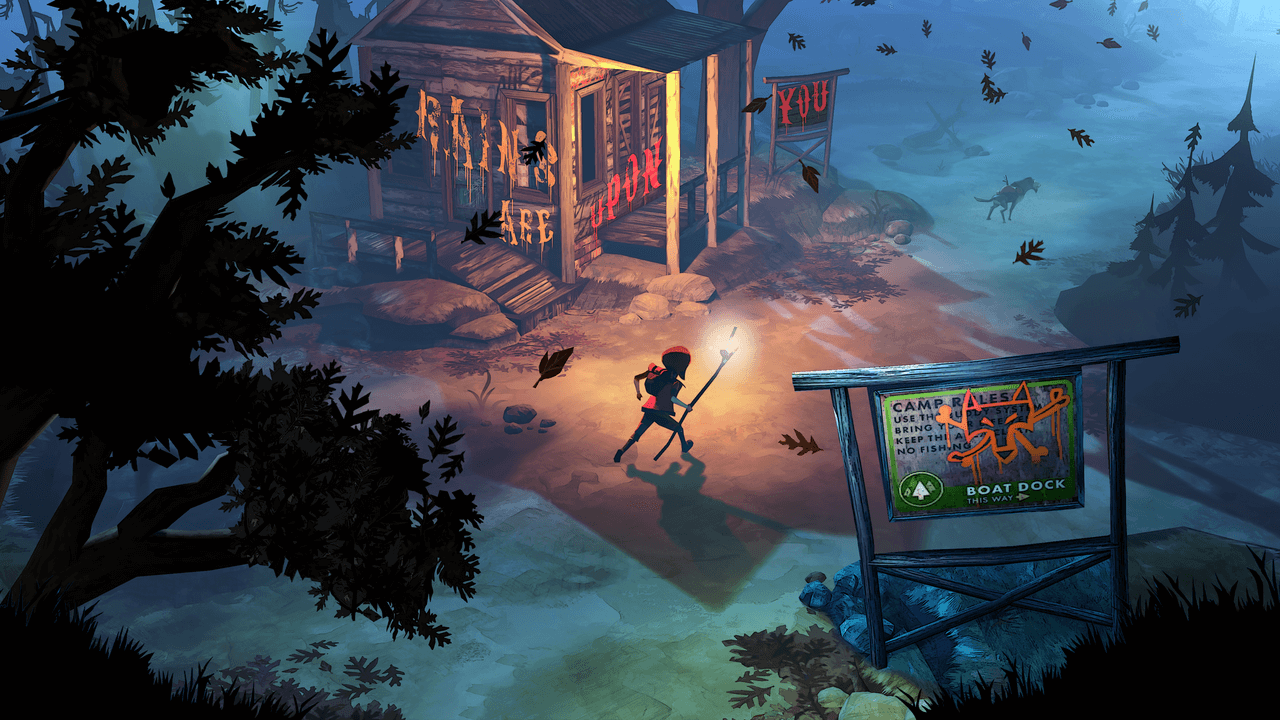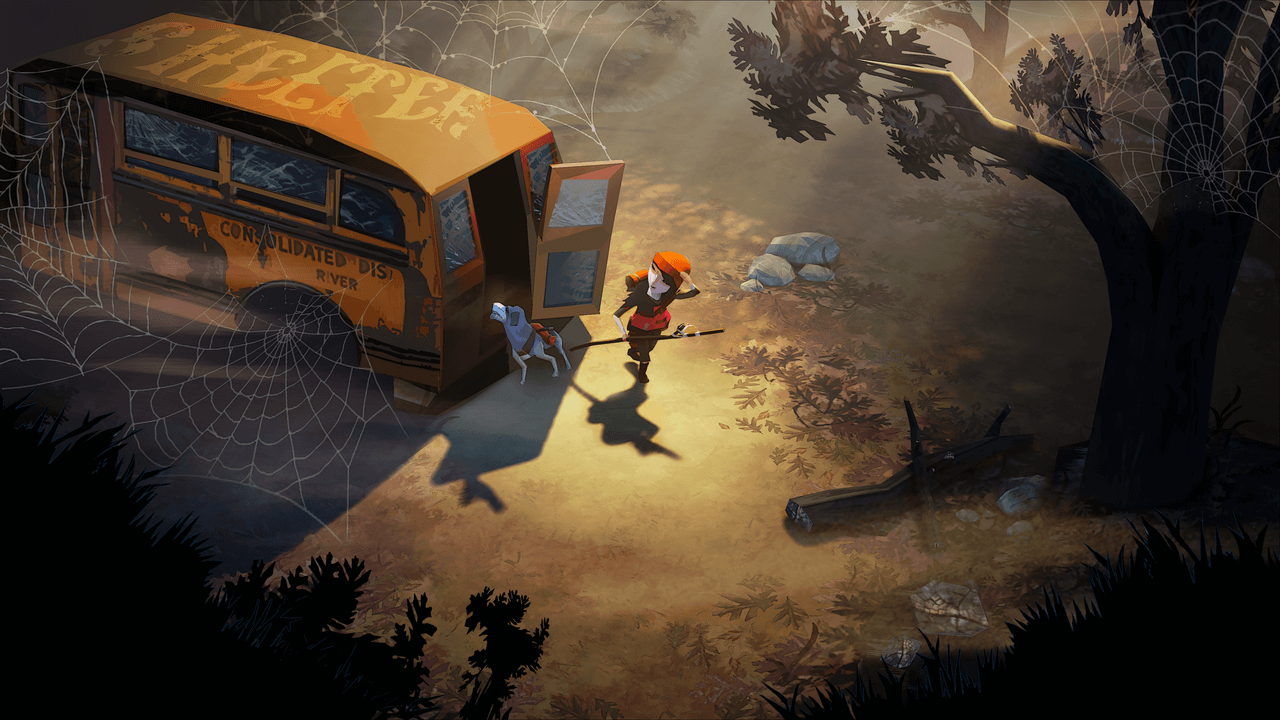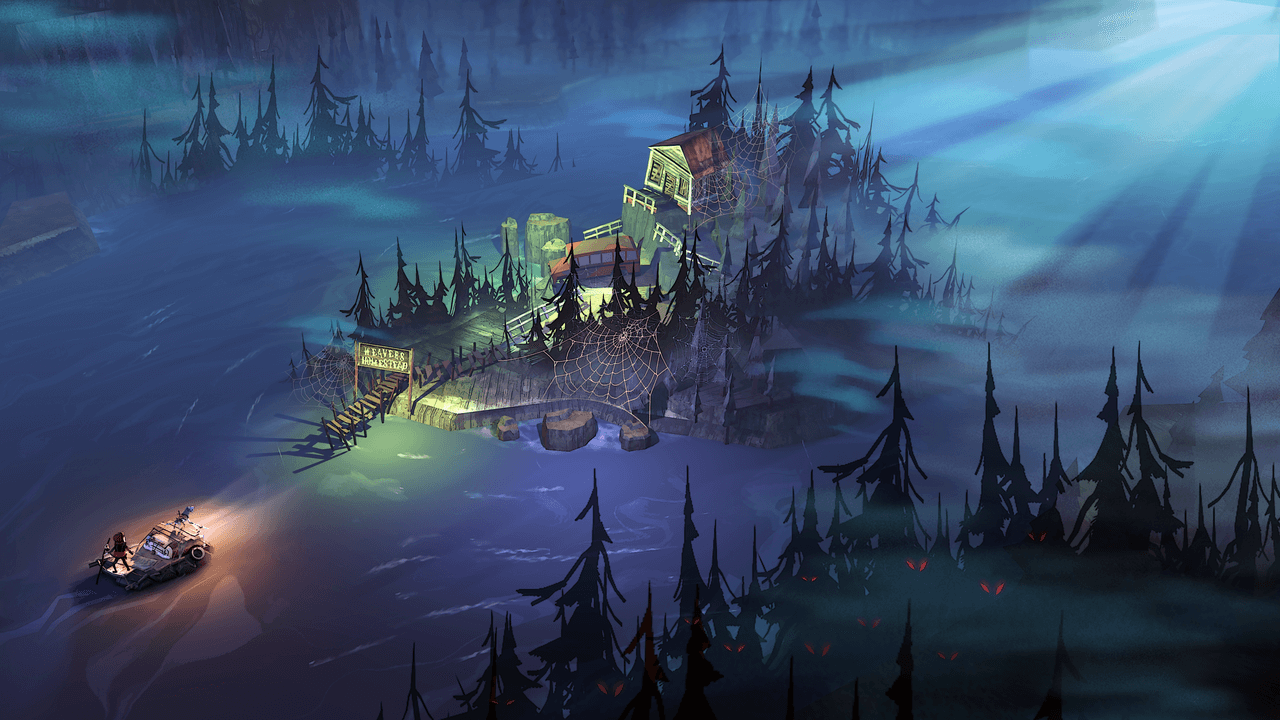Title: The Flame in the Flood
Available On: PlayStation 4, PC
Developer: Molasses Flood
Publisher: Molasses Flood
Genre: Indie Survival
Official Site: https://www.themolassesflood.com/the-flame-in-the-flood/
Release Date: January 17th, 2017
Where to Buy: Steam, PlayStation Marketplace
Survival games are a tricky thing to get right. On the surface, the very notion of a survival game seems to be odds with itself. Typically these games aren’t reliant on power fantasies or rewarding combat, but more around simply surviving, which can feel inherently disconnected. From the get-go, your character can be hungry, or thirsty or tired, but no amount of playing the game is going to take you out of your cozy living room. So what makes a good survival game, or more generally, how can survival games succeed?
The Flame in the Flood is a game that recognizes that survival games live and die on their sense of immersiveness, and it’s clear that this was a top priority from square one. Paddling down the river over wild rapids as a folk-heavy soundtrack sings your survival anthem is the Flame in the Flood at its absolute best. It’s in these moments that the game is content to the let the player immerse themselves and take an active interest in surviving the game world. Held up by an excellent art style and well-handled survival system, the Flame, and the Flood finds its strength in all the right places.

The player takes control of a girl named Scout and she and her trusty dog Aesop make their way across the deserted wilderness. No mention is made of what’s happened to the world around them, but gradually it’s made clear that the world is in a state of some post-apocalyptic disaster. The Flame in the Flood seems wholly uninterested in spoon-feeding you a story about the world, more content to let you fend for yourself in the harsh wilderness and throw you scraps of a narrative right before you starve.
The mechanics are relatively simple as far as survival games go, stay fed, hydrated, warm and rested and you’ll be just fine. Staying healthy and crafting survival crucial resources will account for most of your time during your journey. Every resource is vital; you can find lumber to repair your raft or brew a tea of dandelions to cure your food poisoning. Foraging for berries will only last so long, eventually, you’ll need something more substantial. Catching a rabbit requires a snare, which in requires a stone knife, which requires, flint, and you get the idea.
The crafting and survival systems are relatively simple, thanks to a certain intuitiveness in their design. Regardless of whether or not you’ve played, it’s clear that meat will need to be cooked, water will need to be filtered, and shelter will be needed to keep you rested. Built on the backs of these elements the game is satisfied to let you face the daunting journey without much more information to go on, trusting your ability to learn the systems to accommodate the increasing difficulty. The tutorial comes in the form a few signs in the first area, and after that the games complete instruction manual may as well just say “Don’t Die.”

With a relatively small number of items to craft all made from simple resources, learning these recipes and making more intuitive decisions with my supplies was always satisfying, particularly in how the player is rewarded for making the correct decisions in harsher terrains. The simplicity of the crafting system ensures that survival decisions are clearly defined, as it’s normally obvious when crafting one crucial item will prevent you from crafting another.
The Flame in the Flood is comprised of 10 different regions each presenting unique challenges. Whether it’s a dense city region with scarce food, or the deep country with a barely any docks, the game’s environments felt like they changed the challenge in dynamic enough ways to keep the experience interesting for the duration.
Keeping supplies well-stocked becomes more crucial as the player faces these challenges as checkpoints are few and far between. With checkpoints so distant and supplies increasingly scarce, these harsh systems needed to be designed in a fair manner, which they certainly are. Every time I didn’t make it up the river, it felt like my own unpreparedness was the cause.
Upon my first death, I didn’t feel frustrated but rather encouraged to begin my journey anew, scour harder for materials, rely on my increased knowledge of recipes, and see how well the game had taught me with my last failure. At times the moments of randomness can seem to spite the player, as often crucial supplies won’t be available for longer spans of time than what felt fair, but after becoming familiar with the systems, these random areas of scarcity felt far less unforgiving.

The journey is not without its flaws, and in particular seems to struggle with the same pitfalls that many of these craft-heavy survival titles do. The player is going to be doing just as much journeying through menus as they do through the wilderness, which slows the moment-to-moment gameplay an unfortunate amount, exacerbated by the game’s insistence to not pause as the player crawls through these menus.
Scouts inventory is painfully limited at the game’s outset, with her sole item storage being either her backpack, with Aesop or on the raft. While this does present a nice progression arc as you upgrade your raft and pouch with necessary materials, when I think about starting the game again these opening sections are what give me pause. In a title like the Flame in the Flood immersion is king, so this limitation is ultimately understandable, if not a bit overdone.
The Flame in the Flood suffers from a few minor technical issues as well, items tend to not automatically stack in Scouts inventory, sometimes the disembarking animation simply won’t play, and animals can be glitched out by nearing the end of their active fields. Items for some reason can’t be used directly from the raft inventory, but must be first moved to your bag, and then used from there. That may not seem like a big issue, but considering how many times you’ll be doing this throughout the journey it can become quite tedious.
That aside the Flame in the Flood was a survival game done right. Leaning hard into the folk and wilderness atmosphere was well-worth the effort, and backed with an excellent art style the journey felt immersive and rewarding in the ways most important to a title in this genre. With well-considered systems making survival a satisfying endeavor, the Flame in the Flood sets out for great things, and despite a few trip ups, reaches its destination.
[embedyt] https://www.youtube.com/watch?v=uRkSI0oRG1M[/embedyt]
- Gameplay: Satisfying and rewarding, with a few minor menu-based slowdowns.
- Graphics: Smooth and crisp, the graphics made the art style truly shine.
- Sound: The folk-heavy soundtrack by Chuck Ragan is excellent. I suggest downloading the soundtrack to listen to in your free time, it’s that good.
- Presentation: An interesting art style more than makes up for a few minor technical issues.
[review]







